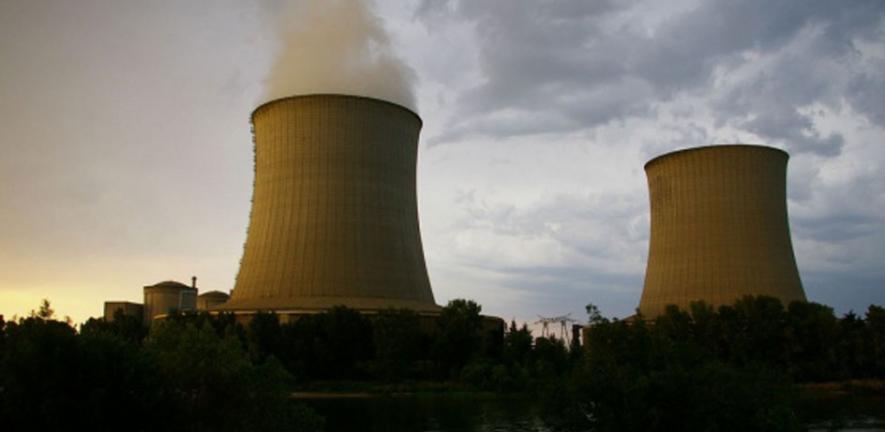
By using thorium instead of uranium as fuel, nuclear power could be safer and more sustainable, according to new research.
By using thorium instead of uranium as fuel, nuclear power could be safer and more sustainable, according to new research.
Our vision of how nuclear power might work in the future addresses quite a lot of the concerns about it such as very long-lived radioactive waste which is a burden on future generations.
Geoff Parks
Since the development of nuclear power, many different strategies for the minimisation and disposal of nuclear waste have been considered.
There are two types of nuclear waste: Fission product waste and actinide waste. Fission product waste is generally easier to manage, because it has relatively short half-lives. By contrast, actinide waste has much longer half-lives; disposal strategies usually envisage that it will have to be stored in purpose-built facilities for thousands of years.
As a result, many researchers have begun to consider the actinides as a resource instead of a waste product, using the reactors themselves to recycle the actinide waste and then reuse it as nuclear fuel.
“The idea of taking actinide waste and getting rid of it in nuclear reactors rather than disposing of it in the ground is well-established, but this hasn’t been thought possible using current commercial reactor technology,” Dr Geoff Parks, of the Department of Engineering, said.
As well as the lack of suitable reactor technology, another issue with establishing an actinide recycling programme is the uranium which is used as fuel in nuclear power plants. The safety of nuclear reactors relies upon negative feedback coefficients, which stabilise the power level in the reactor if operating conditions change. What has been shown when recycling actinide waste in a uranium fuel cycle is that it can be recycled just once or twice before the recycled fuel develops a positive feedback coefficient, making it unsafe for use.
However, as one of Parks’ undergraduate students found, if uranium was replaced by thorium as a fuel source, current reactor technology could be used and the actinide waste could be safely recycled indefinitely.
The idea of using thorium as a fuel source is not new; prototype reactors using thorium were operated in the United States in the 1960s. “The reason why thorium was never seriously pursued as an alternative to uranium is believed to be because the uranium fuel cycle generates much more plutonium, which is the raw material used for nuclear weapons,” said Parks. In addition to its greater resistance to proliferation than uranium, thorium is also about four times more abundant.
Ben Lindley, at the time a fourth-year undergraduate student, discovered that when recycling actinide waste in a thorium-based fuel cycle, the feedback coefficients stay negative, meaning that it can be continuously recycled, leaving only the much shorter lived fission product waste to be disposed of.
Thorium could, in principle, be exploited immediately in existing nuclear reactors, but in order to maximise efficiency, Lindley is looking at ways of reconfiguring the design of such reactors. Now in the first year of his PhD under the supervision of Dr Parks, Lindley is working with Cambridge Enterprise to commercialise his research.
There are issues with using thorium, however. There is currently no thorium industry, so a great deal of infrastructure needs to be put in place before existing power plants can make the switch. However, in order to address the dual concerns of electricity supply for an exponentially growing population and global warming, a major investment needs to be made in nuclear power. While Parks says nuclear is not the only part of the solution to those twin problems, it is a key component. With the advantages that thorium presents, and finite resources of uranium, thorium is now being seen as a viable alternative.
“The reasons for choosing thorium are its abundance in comparison to uranium, its greater proliferation resistance and the possibility of a fuel cycle where the only waste is fission product waste,” said Parks. “I think our vision of how nuclear power might work in the future addresses quite a lot of the concerns about it such as very long-lived radioactive waste which is a burden on future generations.”
With the 50% increase in global population which is expected over the next 50 years, in order just to maintain per capita electricity consumption, a major power station would need to go online every day somewhere in the world. “The electricity-generating infrastructure to meet global energy demands is staggering when you think about it in those terms,” said Parks. “And if it’s going to be low-carbon, then nuclear has to play a role in that.”
This work is licensed under a Creative Commons Licence. If you use this content on your site please link back to this page.





